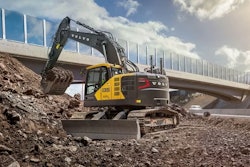As part of our research into this month’s special report on workforce development, we surveyed selected readers on their practices and attitudes in this critical area. Frankly, some of the results were disheartening.
When asked why construction has difficulty in attracting qualified people, 81 percent of our respondents said, “people don’t want to work hard anymore.”
When we asked respondents to list the types of training they offered their field crews, the top answer at 69 percent was “partnering on the job with an experienced person” – in other words, on-the-job training. All other types of training – manufacturer/dealer training on equipment, paid formal training on specific skills, seminars by local construction associations, etc. – were cited by less than 31 percent of respondents.
And then we asked if they were doing any of the following: participating in internships or co-op programs, recruiting at schools (all levels) or recruiting in non-traditional labor pools. Almost half of the respondents said they were doing none of the above. Only 59 percent said they offered their employees health insurance, with another 43 percent indicating they give paid time off.
So let me get this right: these respondents don’t offer much beyond on-the-job training, they don’t actively recruit, and some don’t offer basic employee benefits. And yet the main reason they’re having problems getting good people is that people don’t want to work hard anymore? Um … right.
I do believe, however, the shelf life of such attitudes is expiring. As you’ll see in our special report, long struggles in construction workforce development are starting to bloom and new forces are gathering. Throughout some lessons learned have emerged:
You can’t do it alone. Even Crossland Construction, readily admits this. Although the firm seems to have an individual workforce development thrust, company officials quickly point to all the subcontractors, equipment dealers, high schools and community colleges that give critical contributions. This is not an issue you can strong arm into submission without the help of your entire local construction community.
You don’t have to reinvent the wheel. There are a number of program templates out there – and we’ve showcased several of them in this issue – you can take and tweak to local circumstances. There’s also a universal attitude of openness with those who run these programs – we didn’t talk to a single initiative that wasn’t willing to share. Most regularly host tours for the asking.
You can’t stand by. This industry owes an incredible debt to the contractors, associations, union officials, trades people and educators who had the patience to hammer out these initiatives. They sat through interminable meetings, gritted their teeth when things didn’t always go their way, and put the good of the industry above individual interests. Their work isn’t over, not by a long stretch. The best way you can thank them is by adding your volunteer hours to the mix.









